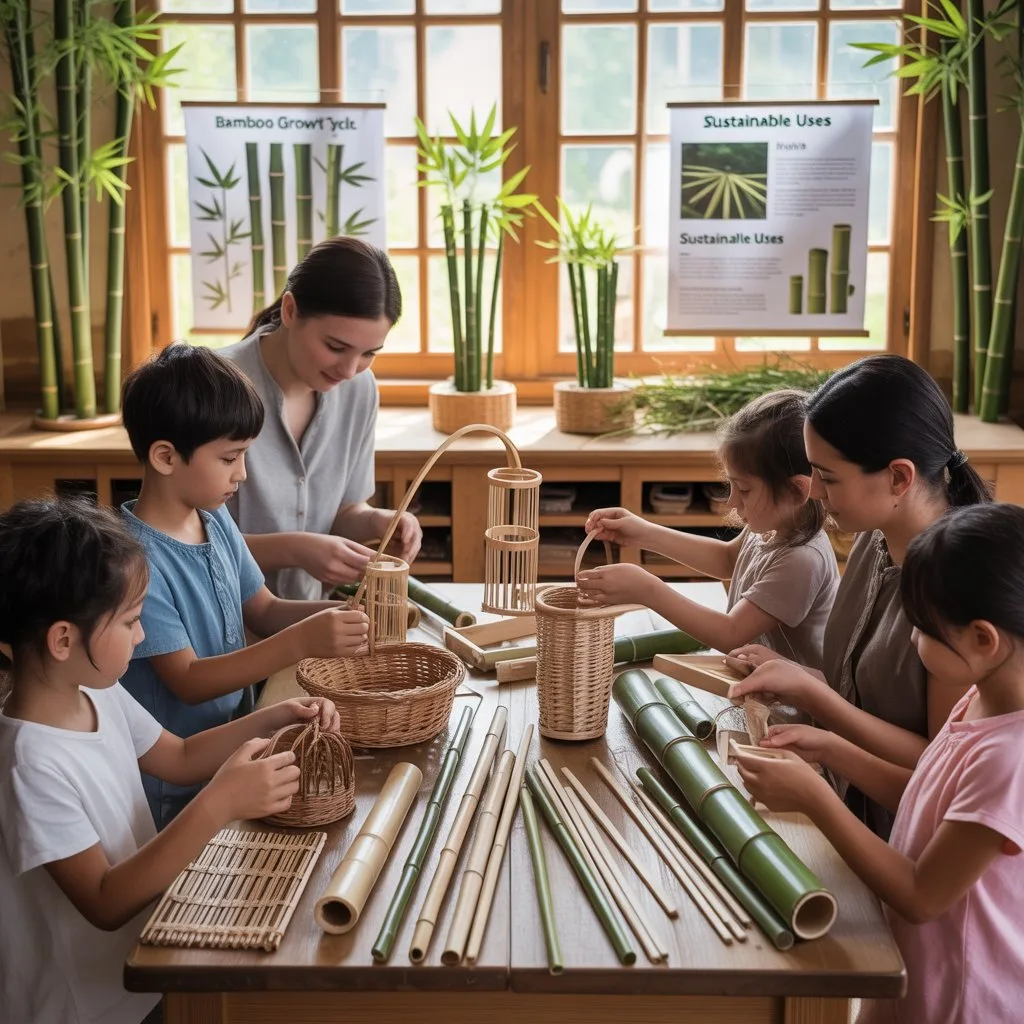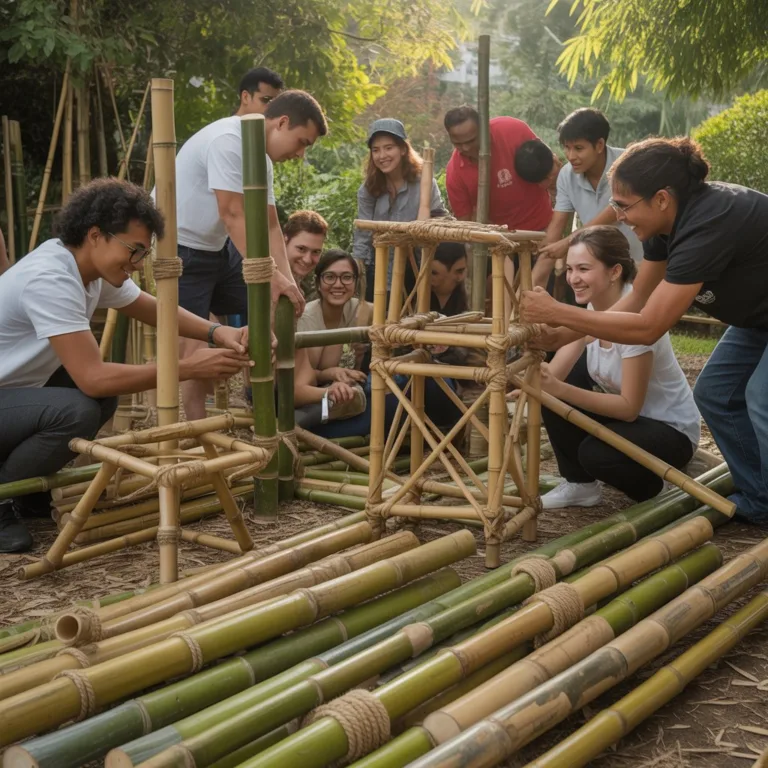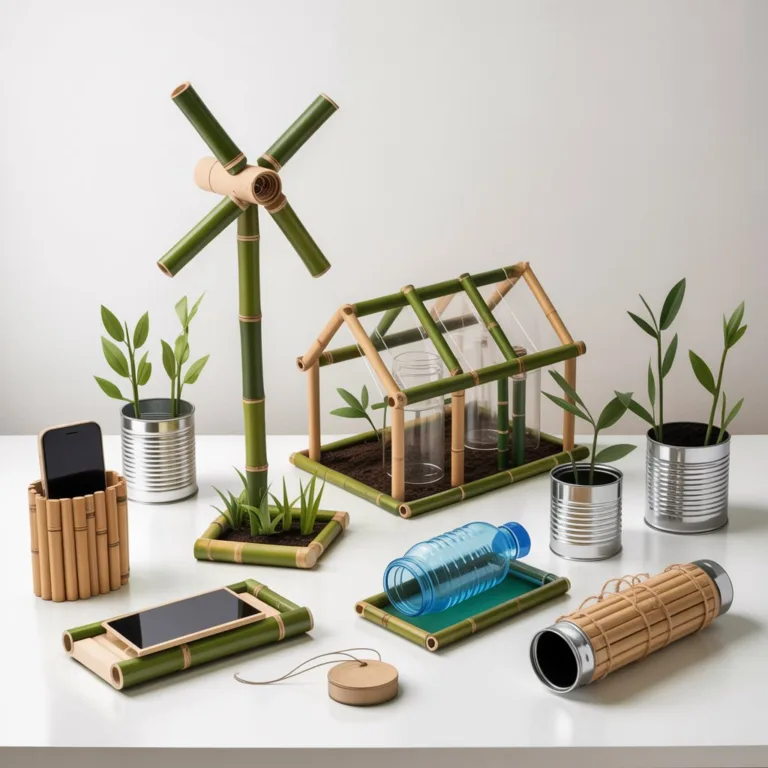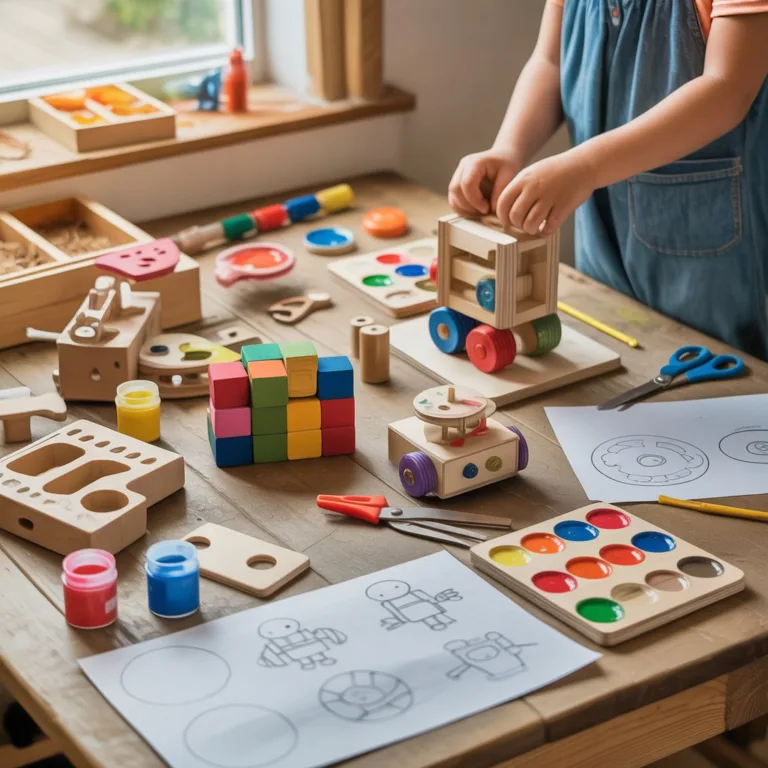In a world where technology and urban living often separate people from the natural environment, hands-on activities like bamboo crafting offer a bridge back to nature. Working with bamboo isn’t just about creating art or functional items—it’s an immersive educational experience that teaches ecological awareness, patience, and creativity. Through crafting, we come to understand the interconnectedness of natural resources, sustainability, and human ingenuity.

Learning about nature through bamboo crafting helps people of all ages connect with environmental values in a tangible way. Whether you’re shaping a musical instrument, building a bird feeder, or creating eco-friendly decorations, every project encourages observation, respect, and appreciation for the living world. Bamboo—strong, flexible, and endlessly renewable—becomes both a material and a teacher.
Discovering Bamboo as a Natural Teacher
Bamboo is more than a plant; it’s a living example of nature’s resilience. It grows faster than most trees, needs minimal care, and regenerates without harming its ecosystem. In many cultures, bamboo represents strength, flexibility, and harmony with the environment.
When learners handle bamboo for the first time, they begin to recognize its remarkable qualities—its lightness, smooth texture, and hollow structure that allows it to bend but not break. This physical experience of working with bamboo naturally opens discussions about biology, growth cycles, and sustainability.
Children and adults alike can discover scientific lessons while crafting. Observing the nodes (the solid joints between hollow segments) teaches about plant structure and adaptation. Learning how bamboo absorbs water or how its fibers align provides insight into plant physiology. Crafting thus becomes a form of experiential science education, allowing participants to study ecosystems while creating something useful or beautiful.
Why Bamboo Crafting is an Effective Learning Tool
Using bamboo in creative projects enhances learning across multiple disciplines—science, art, engineering, and environmental studies. Its versatility allows educators to design engaging lessons that go far beyond traditional classroom settings.
1. Promoting environmental literacy:
Bamboo crafting naturally integrates concepts such as renewable resources, carbon absorption, and habitat preservation. It fosters awareness about how sustainable materials can replace plastics and deforestation-based wood products.
2. Encouraging creativity and problem-solving:
Because bamboo can be shaped, cut, or woven in different ways, each project becomes a small engineering challenge. Learners must consider structure, design, and balance, honing spatial reasoning and innovative thinking.
3. Building fine motor skills and patience:
Sanding, joining, or weaving bamboo requires precision. These tactile tasks strengthen coordination and teach patience, especially to younger learners.
4. Connecting culture and ecology:
In many regions—Asia, Africa, and Latin America—bamboo plays a central role in cultural crafts and architecture. Learning through bamboo introduces students to global traditions that harmonize craftsmanship with respect for nature.
5. Supporting mental well-being:
The rhythmic, meditative nature of crafting soothes the mind. The smell of fresh bamboo, the sound of its fibers, and the act of working with natural textures all contribute to mindfulness and emotional balance.
Exploring Nature Concepts Through Craft Projects
Bamboo crafting can serve as a gateway to environmental topics like ecosystems, biodiversity, and sustainable resource use. Here are several project-based examples that combine creativity and ecological education:
Bamboo Bird Feeders
Constructing a bamboo bird feeder encourages observation of local bird species. Learners can track which birds visit and study feeding habits, migration, and habitat preferences. This simple craft transforms a classroom or backyard into a living laboratory.
Bamboo Wind Chimes
Creating wind chimes introduces sound science and physics. Each bamboo piece produces a unique tone based on its length and thickness. Students can experiment with pitch, resonance, and vibration, turning a natural material into an acoustic lesson.
Mini Bamboo Gardens
Small bamboo planters or trellises make excellent tools for studying plant growth. They can house climbing plants, herbs, or seedlings. As learners monitor these living crafts, they engage in real-time lessons about sunlight, water cycles, and soil ecology.
Bamboo Water Wheels or Irrigation Models
Simple models of water wheels or irrigation systems demonstrate energy transfer and sustainable agriculture techniques. Learners can observe how gravity, flow, and motion interact while understanding bamboo’s historical role in traditional water management.
Bamboo Insect Houses
By bundling bamboo segments, students can create habitats for beneficial insects like bees and ladybugs. This not only supports biodiversity but also sparks discussions about pollination, ecosystems, and the importance of insects in food production.
Each of these crafts transforms an art activity into a dynamic science lesson, making environmental education tactile and memorable.
Learning Sustainability Hands-On
Bamboo crafting embodies sustainability in practice. Every step—from sourcing materials to designing and repurposing—reinforces ecological awareness.
To begin sustainably, it’s important to source bamboo responsibly. Using locally grown bamboo or salvaging leftover pieces from gardening or construction minimizes environmental impact. Avoid using bamboo that’s been chemically treated; instead, opt for natural or cured bamboo that retains its eco-friendly properties.
In crafting sessions, educators can emphasize concepts like:
- Circular design: Reusing scraps to make smaller items, like keychains or jewelry.
- Low-waste crafting: Using natural adhesives, biodegradable finishes, and tools powered by hand instead of electricity.
- Composting and recycling: Teaching what happens to bamboo scraps and how they decompose naturally.
Through these practices, learners internalize sustainability not as an abstract idea but as a daily habit.
Crafting in Outdoor Learning Environments
Taking bamboo projects outdoors enhances the learning experience. Nature becomes both the classroom and the inspiration.
In a forest school, garden, or park, learners can observe bamboo growing alongside other plants. They can measure its height, count nodes, or compare growth rates to nearby species. Outdoor crafting sessions encourage sensory engagement—feeling the texture of bamboo, listening to birds, smelling fresh leaves, and understanding the natural world through direct experience.
Outdoor bamboo crafting can also strengthen community ties. For example, a class can build bamboo benches or sculptures for a local garden, combining environmental stewardship with teamwork. As participants watch how weather and time affect their creations, they develop a deeper appreciation for the materials and ecosystems around them.
Integrating Bamboo Crafting into Education
Teachers and facilitators can easily integrate bamboo crafting into existing curricula across age groups.
For early learners: Focus on sensory play and basic building. Let children touch, stack, or decorate bamboo segments. Introduce vocabulary like “node,” “stem,” “fiber,” and “growth.”
For elementary students: Incorporate simple design projects such as bamboo boats or picture frames. Combine the activity with lessons on renewable resources or animal habitats.
For older students: Introduce geometry, measurement, and engineering challenges—building mini bamboo bridges, windmills, or eco-instruments. These projects naturally connect to STEM (Science, Technology, Engineering, and Mathematics) learning.
For art and culture classes: Explore bamboo’s role in different traditions, such as Japanese basket weaving, Chinese calligraphy brushes, or Filipino musical instruments. Through hands-on crafting, students learn about global cultural diversity and sustainable artistry.
When educators use bamboo crafting as an interdisciplinary teaching tool, it transforms the classroom into an ecosystem of curiosity, connecting art, science, and culture under one theme: living in harmony with nature.
Understanding Bamboo’s Ecological Role
Learning about bamboo’s place in the ecosystem deepens appreciation for its value as a crafting material. Bamboo groves provide food and shelter for countless species—from insects and birds to larger animals like pandas and lemurs. Their extensive root systems prevent soil erosion and restore fertility, helping maintain ecological balance.
By discussing these ecological roles while crafting, learners gain insight into the global importance of bamboo ecosystems. They begin to see that every stalk of bamboo connects to a network of life. This awareness cultivates a sense of environmental responsibility that extends beyond the workshop.
Moreover, understanding bamboo’s carbon-absorbing capabilities can spark discussions about climate change. Bamboo absorbs large amounts of CO₂ and releases 35% more oxygen than trees of similar size. Through crafting, learners not only work with a sustainable resource—they also learn how such materials contribute to mitigating global environmental challenges.
Inspiring Creativity with Natural Aesthetics
Bamboo’s beauty lies in its simplicity. Its golden hue, smooth surface, and natural grain make it a perfect material for creative exploration. In crafting sessions, participants can blend modern design with traditional techniques, experimenting with texture, symmetry, and balance.
Decorating bamboo projects with natural dyes, leaves, or eco-paint reinforces the theme of nature-inspired art. Learners can collect fallen leaves or flower petals to imprint patterns onto bamboo, discovering organic color palettes that mirror the seasons.
This creative process not only strengthens artistic skills but also develops environmental mindfulness. Every artistic choice—color, shape, finish—becomes a reflection of one’s relationship with nature.
Building Community Through Bamboo Crafting
When practiced collectively, bamboo crafting can unite people across ages and backgrounds. Schools, local organizations, and community gardens can organize eco-crafting workshops that teach sustainability in engaging ways.
In these workshops, participants may collaborate on larger projects—like building bamboo installations, community signs, or seating areas. Such initiatives transform crafting into environmental activism, beautifying public spaces while promoting awareness of renewable materials.
Communal bamboo projects also encourage sharing knowledge. Elders can pass down traditional techniques, while younger participants bring innovative ideas. This intergenerational exchange helps preserve both cultural heritage and ecological consciousness.
The Deeper Lesson: Harmony with Nature
At its core, bamboo crafting teaches a fundamental truth: humans are part of nature, not separate from it. Each piece of bamboo carries a story of growth, adaptation, and cooperation within its environment. By learning through bamboo crafting, we absorb these lessons intuitively.
Every cut, weave, or polish becomes an act of mindfulness—a small meditation on how we use the Earth’s gifts. The process invites us to slow down, observe, and respect the materials we handle. In doing so, we nurture both creativity and ecological empathy.
As people reconnect with nature through their hands and hearts, they begin to see sustainability not as a restriction but as a joyful expression of coexistence. The simple act of crafting with bamboo can spark lifelong curiosity about the natural world and a commitment to protect it.
So, pick up a piece of bamboo, feel its texture, and let it guide your imagination. Through this humble material, nature speaks—and the more we listen, the more we learn about balance, resilience, and creativity.

Elena Mora is a creative educator and eco-craft enthusiast who specializes in bamboo musical instruments and sustainable toys for children. She believes that hands-on learning through play teaches kids about creativity, music, and environmental responsibility.



